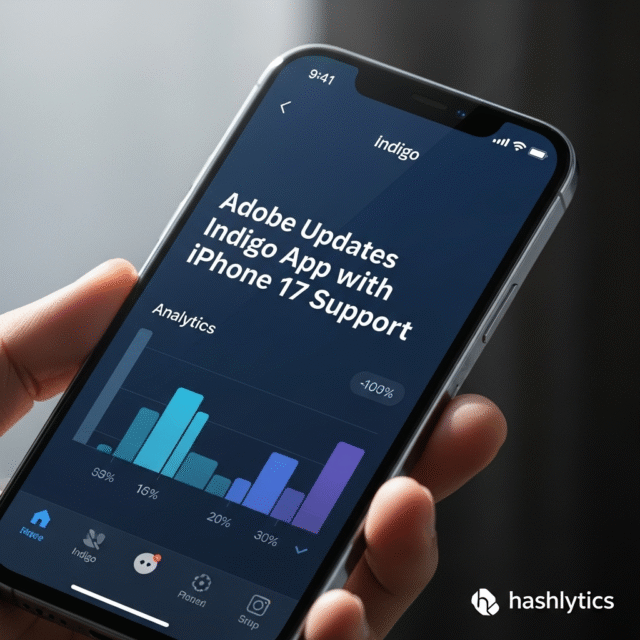Adobe’s Project Indigo app, designed to bring professional camera settings to iPhones, receives a much-anticipated update with iPhone 17 series support. Here’s what works, what doesn’t, and whether it can truly elevate your mobile photography.
iPhone 17 Support Arrives (Mostly)
When Adobe launched Project Indigo, it promised iPhone users a DSLR-like experience with professional manual controls. However, the app initially lacked support for the iPhone 17 series, frustrating early adopters.
The latest update brings support for the iPhone 17 series rear cameras, but with limitations. The front camera, featuring a new square sensor and Apple’s Center Stage technology, remains unsupported. Adobe has indicated that front camera compatibility will arrive with iOS 26.1, which addresses a compatibility issue.
Professional Controls Meet AI Enhancement
Project Indigo combines manual photography controls with AI-powered features designed to maximize iPhone camera capabilities:
- Manual Controls – Granular adjustments for white balance, shutter speed, and exposure settings
- Zero-Lag Shutter – Constantly captures raw images while the viewfinder runs, enabling precise timing for action shots
- AI Resolution Upscaling – Extends zoom to 10x while preserving detail beyond the iPhone’s native 5x optical limit
- AI Denoising – Sharpens images and brings out details in challenging lighting conditions
- Reflection Removal – Tools to reduce unwanted reflections in glass or water
The zero-lag shutter feature stands out particularly for capturing split-second moments—whether photographing fast-moving subjects like athletes or pets, or seizing fleeting compositional opportunities.
Image Quality: Natural Tones vs Native App
Indigo often produces a more natural aesthetic with realistic shadow tones and highlights. In contrast to the heavily processed look of many smartphone photos, Indigo images maintain a pleasing balance that requires less post-processing in editing applications.
The AI Denoise tool can enhance sharpness and reveal details, particularly beneficial at higher zoom levels. However, results vary by scenario. In some situations, particularly at maximum zoom, the iPhone’s native camera app delivers sharper, more contrast-rich images.
As an Adobe product, Indigo integrates seamlessly with Lightroom for editing DNG raw files. However, some users have reported compatibility issues with third-party editors like Google’s Snapseed, which may require future updates to resolve.
Trade-offs to Consider
While Indigo offers deeper functionality than Apple’s native camera app, particularly for manual control enthusiasts, there are compromises:
- Missing Apple Features – No access to Live Photos or Photographic Styles available in the native camera
- App Switching – Toggling between apps for different shooting modes (stills vs video) can disrupt workflow
- Learning Curve – Manual controls require photography knowledge to maximize benefits
- Variable Results – AI enhancements don’t always outperform Apple’s computational photography
The app works best for photographers who want granular control and are comfortable with manual settings. For casual shooting where speed matters, the native camera app may remain more practical.
Ideally, deeper integration between Adobe’s capabilities and Apple’s native camera features would provide the best of both worlds, though such collaboration would require partnership between the companies.



